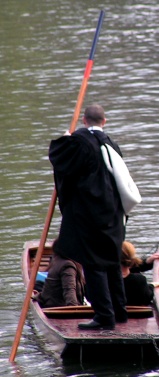Difference between revisions of "AY Honors/Rowing/Answer Key"
(→Pram) |
|||
| Line 43: | Line 43: | ||
==8. What is the advantage of feathering oars while rowing? == | ==8. What is the advantage of feathering oars while rowing? == | ||
==9. How would you handle a rowboat in a sudden storm or high wind? == | ==9. How would you handle a rowboat in a sudden storm or high wind? == | ||
| − | ==10. How would you calculate the weight that can be safely carried under normal | + | ==10. How would you calculate the weight that can be safely carried under normal conditions in any given boat under oars? == |
| + | |||
==11. What lights are required on a rowboat at night, both with and without outboard motor? == | ==11. What lights are required on a rowboat at night, both with and without outboard motor? == | ||
==12. Know how to properly fit out a rowboat, and maintain and care for it during the boating season. Know how to prepare and store the rowboat when not in use. == | ==12. Know how to properly fit out a rowboat, and maintain and care for it during the boating season. Know how to prepare and store the rowboat when not in use. == | ||
Revision as of 02:17, 15 November 2007
Template:Honor header Template:AY Master
1. Have the Intermediate Swimming Honor.
2. With your instructor or counselor in stern, and without assistance, row properly the following:
a. A quarter of a mile on a straight course, stop, make a pivot turn, and return to the starting point.
b. Back water in a straight line 200 yards (182.9 meters). Make a turn under way, still backing water, and return to the starting point. (Feather after each stroke. Pin rowlocks must not be used.)
3. Demonstrate the following:
a. Properly launch and land a rowboat from and to shore.
b. Safely assist a person to and from a rowboat alongside a pier.
c. Tie a rowboat to a pier using each of the following:
Adventist Youth Honors Answer Book/Knot/Clove hitch Adventist Youth Honors Answer Book/Knot/Round turn Adventist Youth Honors Answer Book/Knot/Two half hitches Adventist Youth Honors Answer Book/Knot/Bowline Adventist Youth Honors Answer Book/Knot/Hitching tie
4. Alone, or with the assistance of a person who is a swimmer, swamp rowboat, turn it right side up, get in, and with your hands or an oar, paddle it for 30 feet (9.1 meters). Tell why you should hang onto or get into a swamped rowboat.
5. Shove off from shore or pier alone in a rowboat, approach a swimmer, and maneuver so that the swimmer can be safely towed ashore.
6. Identify and describe a dory, dory skiff, dinghy, punt, and pram.
Dory
A dory is a small, shallow-draft boat of approximately 5 to 7 m![]() in length. Lightweight and versatile, these boats are used in the open sea for commercial fishing applications, as well as in whitewater rafting on interior rivers. McKenzie River dory versions usually seat from two or three to four people including the oarsman.
in length. Lightweight and versatile, these boats are used in the open sea for commercial fishing applications, as well as in whitewater rafting on interior rivers. McKenzie River dory versions usually seat from two or three to four people including the oarsman.
The hullform is characterized by flat sides angled approx. 30 degrees from the vertical, and a bottom that is transversely flat and markedly bowed fore-and-aft. (This curvature is known as 'rocker'.) The stern is frequently a raked surface (a narrow transom) that tapers sharply toward the bottom forming a nearly double-ended boat.
Dory Skiff
The term skiff is used, and has been used, to refer to many various types of seemingly unrelated small boats.
One current usage of skiff is to refer to a typically small flat-bottomed open boat with a pointed bow and a flat stern originally developed as an inexpensive and easy to build boat for use by inshore fishermen. Originally designed to be powered by rowing, their form has evolved so that they are efficiently powered by outboard motors. The design is still in common use today for both work and pleasure craft.
Punt
A punt is a flat-bottomed boat with a square-cut bow, designed for use in small rivers or other shallow water. Punting refers to boating in a punt. The punter generally propels the punt by pushing against the river bed with a pole.
Punts were originally built as cargo boats or platforms for fowling and angling but in modern times their use is almost exclusively confined to pleasure trips on the rivers in the university towns of Oxford and Cambridge in England and races at a few summer regattas on the Thames.
Pram
A pram is a small utility boat with a squarish rather than pointed bow. This type of pram provides a more efficient use of space than does a traditional skiff of the same size.

